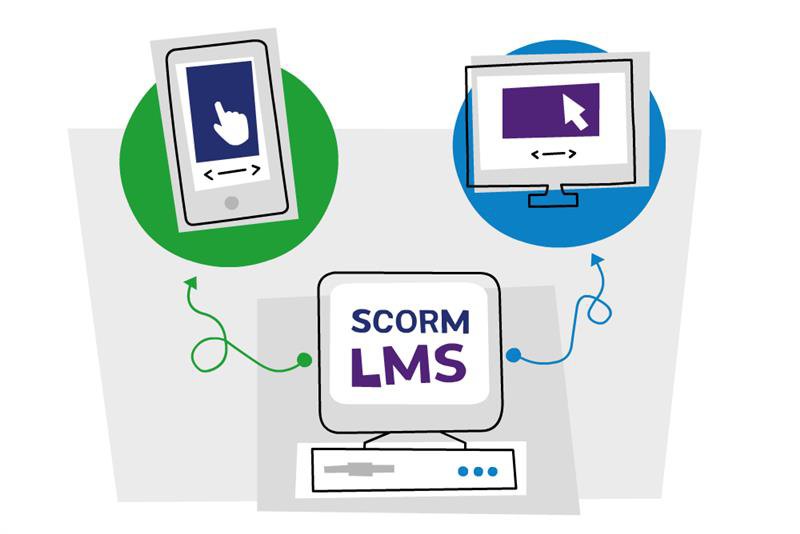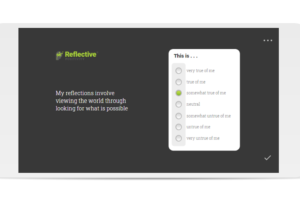
Beyond SCORM: A Practical Guide to Future-Ready Learning
From Game-Changer to Gatekeeper
When it launched in the early 2000s, SCORM changed the game. For the first time, organisations had a consistent way to deliver and track eLearning across different LMS platforms. It solved a huge interoperability problem and quickly became the universal language of digital learning.
For nearly two decades, SCORM served its purpose well. It offered clarity and consistency in an industry that was rapidly moving from classrooms to computers. It also provided something LMS administrators desperately needed: a way to confirm whether learners had completed training.
And it’s still here. A recent Software Advice survey shows that 62% of businesses continue to use SCORM courses in their LMS. This entrenched reliance highlights SCORM’s resilience and its role as the trusted backbone of compatibility and tracking. In many organisations, SCORM is synonymous with eLearning itself.
But here’s the truth: SCORM was built for a different era and the cracks are showing.
The Limits of SCORM in 2025
SCORM is reliable, but reliability alone isn’t enough in today’s learning landscape.
Modern workplaces need agile, responsive, data-rich learning experiences. Learners need content that’s engaging, personalised, and available in the flow of work. But SCORM, designed at a time when eLearning meant “a single linear course on a desktop computer,” can’t deliver on these expectations.
SCORM falls short because it:
- Only captures surface-level metrics: completions, scores, duration.
- Locks content inside LMSs, isolating it from everyday tools like Teams, Slack, or CRM platforms.
- Encourages monolithic courses – long, static, and difficult to maintain.
- Was never designed for mobile learning, adaptive pathways, or real-time analytics.
The result? Learning content that can look slick but behaves inflexibly.
The 80-Screen Induction Example
We’ve all seen it. The 80-screen induction course that’s beautifully designed packed with video, branching scenarios, and interactivity. On paper, it looks like a modern eLearning masterpiece.
But in practice, it’s cumbersome:
- Updating a single section means republishing the entire course.
- Every learner, regardless of their prior knowledge, must sit through every screen.
- The content can’t adapt dynamically to different roles, teams, or career stages.
- Even when design is strong, the format itself becomes the bottleneck.
That’s why many forward-thinking organisations are moving away from monolithic design and instead creating modular learning ecosystems.
Imagine breaking that 80-screen course into a suite of smaller, standalone modules:
- Code of conduct
- Safety procedures
- Systems access
- Site-specific requirements
- Team expectations
Each module is media-rich, interactive, and engaging, but now the content is flexible. It can be reused across programs, sequenced differently for different audiences, or recommended dynamically by AI-powered platforms based on need.
This approach not only improves learner experience but also makes maintenance far easier. Updates happen at the module level, not across entire courses.
The Rise of xAPI & cmi5: Smarter Data, Richer Experiences
If SCORM handles the basics, xAPI and cmi5 represent the future.
- xAPI captures learning far beyond the LMS. It can record experiences across mobile apps, simulations, on-the-job training, coaching sessions, or even real-world performance. Instead of simply knowing that “Jane completed the course,” organisations can see “Jane practiced the simulation three times before passing” or “Jane accessed performance support while completing a task.” These statements are stored in a Learning Record Store (LRS), opening up a new world of insight.
- cmi5 acts as the structured bridge for xAPI in LMS environments. It provides the rules and frameworks to integrate xAPI statements with LMSs, ensuring both flexibility and formal structure.
Together, they allow organisations to move from tracking completions to tracking real impact – how learners engage, what they apply, and where gaps remain.
L&D’s AI Revolution
Industry analyst Josh Bersin recently sounded the alarm: traditional LMSs – and by extension, SCORM – are holding L&D back. In his recent report, It’s Time for an L&D Revolution: The AI Era Arrives, Bersin highlights how most corporate learning systems still struggle to integrate with the tools people use every day, and very few are using AI effectively.
- Just 15% of companies say their learning systems are well integrated with core business platforms.
- Only 8% use AI to automate administrative tasks like reporting.
- And a mere 7% of L&D teams consider themselves AI-savvy.
Bersin’s view is clear: the era of catalogues and monolithic courses is ending. Instead, we’re moving into an age of real-time, AI-enabled learning where content is modular, data-rich, and embedded directly in the flow of work.
As he puts it, “the content and the platform are the same thing” meaning learners expect systems that don’t just deliver content, but adapt, recommend, and even act as conversational tutors.
This reinforces what many L&D leaders are already feeling: SCORM may still dominate completions, but the future of learning will be AI-powered, modular, and context-driven.
Trends Shaping the Future of Learning Standards
Several trends are accelerating this shift:
- Microlearning & Personalised Paths – SCORM can be adapted for bite-sized learning, but xAPI handles this natively. Adaptive systems can deliver short, targeted content sequences aligned to skill needs.
- Mobile-First Design – Learners want to access training anywhere, anytime. Responsive design is non-negotiable, and newer standards support this more seamlessly.
- Gamification & Analytics – Leaderboards, badges, behavioural insights, and predictive analytics are all easier with xAPI and modern analytics platforms.
- AI Integration – Learning is moving toward systems that adapt in real time, recommending content, sequencing modules, and personalising delivery based on behaviour. SCORM alone cannot support this, but xAPI can.
- Immersive Technologies (VR/AR) – Future-ready learning experiences, like VR safety drills or AR product simulations, need standards that capture complex interactions. SCORM was never designed for this, but newer standards are being built with it in mind.
These trends are not abstract predictions. They are already influencing how organisations design and deliver learning in 2025.
The Role of Storyline & Rise in the Transition
A common question is: Where do familiar apps like Articulate 360 fit in?
The answer is reassuring: they are not going away. Instead, they are evolving with the times.
Articulate Storyline remains the powerhouse for interactive, custom, and scenario-driven learning. But instead of publishing massive SCORM courses, forward-thinking teams are using Storyline to create smaller, reusable objects. These can be tracked with xAPI, feeding into advanced analytics systems that reveal much more than completions. Accessibility features, AI-driven narration, and flexible publishing options ensure Storyline remains both relevant and powerful.
Articulate Rise is already ahead of the curve. Its modular, responsive design aligns perfectly with microlearning and just-in-time delivery. Rise content can be sequenced into adaptive pathways, surfaced directly in workplace tools, and repurposed quickly. It’s the ideal companion for AI-enabled learning systems that deliver content at the moment of need.
Together, Storyline and Rise give organisations the creative flexibility to design once and deliver everywhere, whether inside an LMS or in the flow of work.
Smarter Transition Strategies
For most organisations, the path forward isn’t to abandon SCORM overnight. It’s about transitioning strategically.
- Hybrid Approach – Keep legacy SCORM courses, chunk them into smaller modules and pilot xAPI and cmi5 for new projects.
- Conversion Tools – Use available tools like Articulate 360 to convert SCORM content into xAPI-compatible formats, preserving investments while unlocking richer data.
- Cloud & Analytics Platforms – Leverage LMS add-ons or next-gen platforms that enhance SCORM with dashboards, analytics, and mobile responsiveness.
- Stay Flexible – Build modular content with interoperability in mind. Avoid creating “locked” courses that will be hard to adapt later.
This transition not only protects existing investments but also prepares organisations for the data-driven, AI-enabled future of workplace learning.
Final Thought: The Future Isn’t in a SCORM File
SCORM still plays an important role today and will for some time. But the future of learning cannot be measured by completions alone.
The future is:
- Smarter – powered by advanced standards like xAPI and cmi5.
- Personalised – adaptive to each learner’s needs, roles, and career path.
- Modular – designed as flexible, reusable building blocks.
- Impact-driven – focused on behaviour change and performance outcomes.
Now is the time for L&D teams to prepare. Chunk your content. Experiment with xAPI. Rethink monolithic design. Build for agility.
Because the next generation of learning won’t live inside a SCORM file. It will live where learners are, in the flow of work, in real experiences, and in systems that measure what truly matters.
We can help to reimagine your courses. Whether it’s modular pathways in Rise, scenarios in Storyline, or animated designs, our team can help you build content that’s ready for the next era of learning. See how we can help.
Source link


